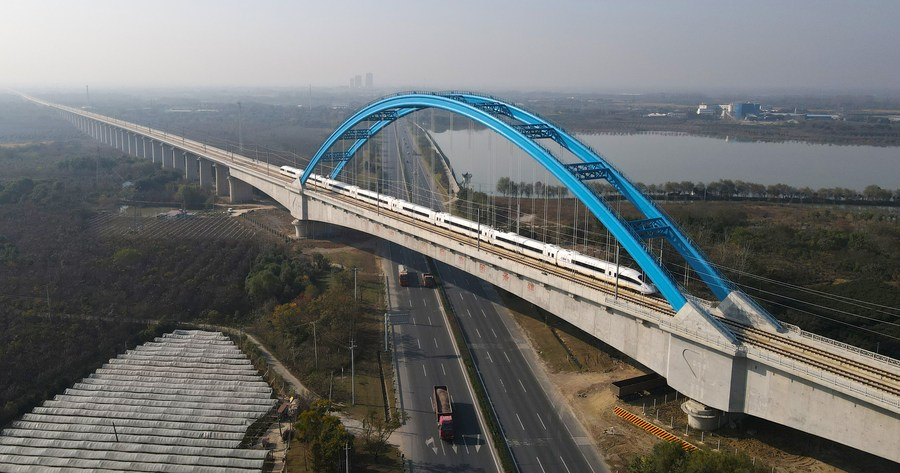BEIJING, Dec. 22 (Xinhua) -- China has worked hard to conserve energy, reduce emissions and develop low-carbon transport to boost economic development, says a white paper released Tuesday.
It has strictly implemented a system that controls both the total amount and intensity of energy consumption to improve the overall efficiency of transport, says the white paper titled "Sustainable Development of Transport in China" released by the State Council Information Office.
The national railway electrification rate has reached 71.9 percent. There are now more than 400,000 buses and 430,000 trucks using new energy, 180,000 natural gas vehicles and 290 liquefied natural gas (LNG) ships.
It says about 14 percent of airport vehicles and facilities are run on new energy sources, substitute facilities for aircraft auxiliary power units (APUs) are in full use and the numbers of postal vehicles run on new and clean energy and those that are in service in key regions are steadily increasing.
More than 7,400 charging piles have been built and operated in 942 expressway service areas across the country, more than 5,800 sets of shore power facilities have been built at ports, covering over 7,200 berths, and container terminals at major ports along the Yangtze and coastlines have switched from oil to electricity for power, the white paper says.
The annual energy saved by green transport provinces and cities, green highways, green ports and other demonstration projects has exceeded 630,000 tonnes of coal equivalent, according to the document.
It points out that the central government has used vehicle purchase tax funds to support the construction of comprehensive passenger terminals, freight hubs and port railways, and coordinated the development of road-rail, sea-rail and other multimodal forms to restructure the transport network. Enditem




 A single purchase
A single purchase









